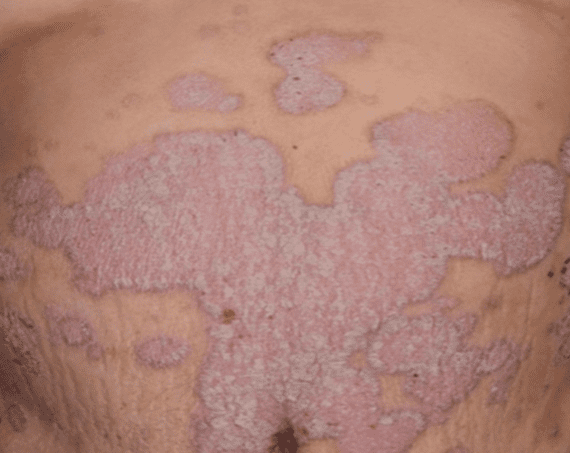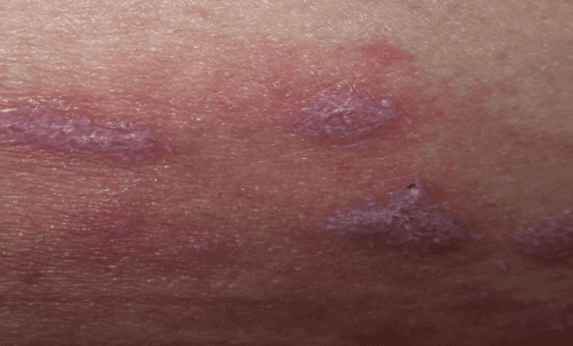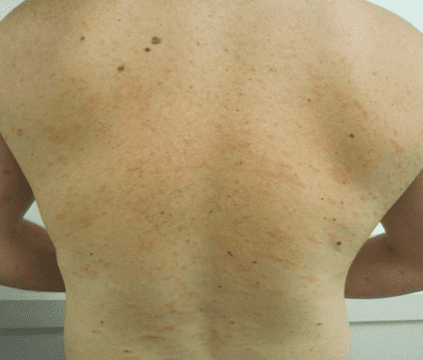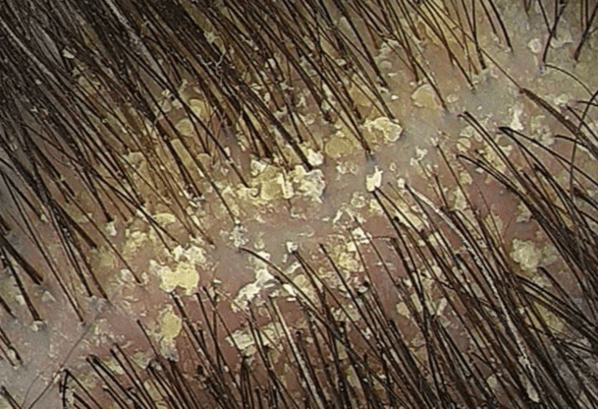Scaly Skin Eruptions
Psoriasis
- Common Chronic skin inflammation affecting 2-4% of population
- It can have variable severity and spread
- It has several types the most common is Plaque Psoriasis
- It can cause arthritis and it can affect the nails
- Psoriasis carries increased risk for heart and kidney disease
- Smoking makes it worse
Treatment:
- Localized: Topical Vit. D and topical steroids
- Severe (>10% of body surface)
- Phototherapy
- Immunosuppressive (Methotrexate and cyclosporine)
- Newer agents targeting the inflammation mediators known as (Cytokines)

Lichen Planus
- It is a disease caused by T-Lymphocyte disorder
- It affects 0.2 to 1% of population
- It causes itchy flat scaly thick lesions with violet color
- Location :ankles, elbows, mucous membranes and nails
- It resolves spontaneously in 1-2 years
- It occurs in Hepatitis C patients
- Mucosal and some hypertrophic skin lesion can transform to squamous cell cancer
Treatment: limited—> topical steroids
Severe or oral lesions—> same as Psoriasis

Pityriasis Rosea
- Common rash thought to be caused by reactivation of Herpes Virus 6 or 7
- In 50% of cases it starts with a single large ring like patch (Herald patch) on the trunk and days later many more smaller lesions (skin colored) appears almost like “Christmas tree”
- No treatment needed and it resolves spontaneously in weeks to months
- Secondary syphilis may mimic this rash but syphilis affects the palms and soles too and it causes swollen lymph nodes
- Macrolides, Acycolvir and/or phototherapy may be helpful

Seborrheic Dermatitis
- It is characterized by greasy yellow scaly patches in oily skin area (scalp-dandruff , face, ears and upper chest)
- It is caused by heightened sensitivity to oil living yeast (Malassezia)
- More prevalent in immunosuppressed and HIV patients
- Treatment: OTC Selenium sulfide or Zinc Pyrithione

Miliaria (Heat Rash)
- It is caused by occlusion and subsequent rupture of the sweat glands ducts
- Overgrowth of Staph Epidermis may contribute to the disease
Miliaria Types:
- Miliaria Crystallina caused by occlusion near the skin surface and manifests by tiny pin head clear blisters
- Miliaria Pustulosa the blisters are not clear but rather turbid (infected)
- Miliaria Rubra caused by deeper occlusion of the sweat duct, it manifests by tiny red papules usually on the trunk
Treatment: supportive and removal of occluding agents or conditions. Low potency topical steroid may be of help.

Transient Acantholytic Dermatosis (Grover Disease)
- This is a common disease affecting middle aged and elderly white.
- It causes red bumps on the truck some of which can be scaly
- It may cause itching
- It may cause seasonal flare ups in spring and winter
- The cause is unknown
- Risk factors include sun damage, eczema and psoriasis
- It can be triggered by dry skin, sweating, sun exposure, medications and internal neoplasms
- Diagnosis is by skin biopsy
Treatment: Emollients and Steroids
